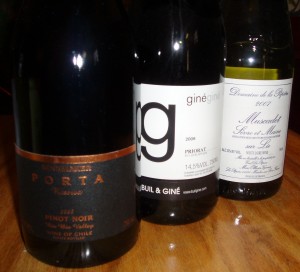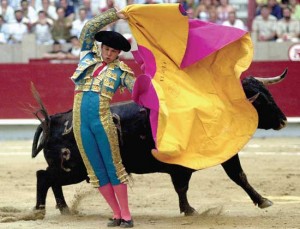Girl Scout Cookies are a distinctly, happy, American phenomenon - one of those great traditions from everyone's youth you get excited about all over again each year. If your community is predisposed to the door-to-door Saleschild, first you order them. Then you wait. Sometimes a couple of months as the orders get processed. Then, finally, said child returns bearing gifts at your door. This happened to us last week. And it was a wondrous moment!
But as it was late on a Friday afternoon, we thought why not enhance said tradition with something other than a glass of milk, that also further celebrates their All American-ness?
Today we offer findings from our taste-enhancing research, to further your own on-going enjoyment of this sacred tradition and this Classic line-up of Girl Scout Cookies. Cheers!
thin mints® | Cabernet Sauvignon. This grape is predisposed to notes of eucalyptus and mint, particularly when made in Lodi, California+ the dark chocolate on these cookies is ever-more Cab-loving! (Of course an old vine Zinfandel, Petite Sirah or Syrah won’t disappoint either.)
shortbreads| Chardonnay. This grape is a no-brainer for these buttery cookies! Try a classic California style like Chateau St. Jean, or experiment with some great Chards coming out of lesser-known states, like Ravines Wine Cellars (Finger Lakes, NY) or Westport Rivers Winery (Cape Cod, MA). Domestic sparklers made from the Chardonnay grape are also a great match! J Vineyards (California) or Gruet (New Mexico) have Brut (dry) selections that would be decadent with these cookies.
samoas| Roussanne orViognier. These cookies have evolved since the '80s, now incorporating caramel and coconut, but we didn't hold it against the Girl Scouts of America; some change is good! Here try something a little bit more “exotic” like the Stolpman Family Roussanne or White Knight Viognier. Whoop!
peanut butter sandwiches| dry Gewürztraminer or dry Riesling. In the right hands and even more so when vinified dry, these grapes are a terrific match for these delightfully cloying, lingering, slightly salty cookies. The wines will meet their match, delivering a touch of unctuousness met with a wonderful, mouthwatering pop of acidity to cut through the ‘fat’ of these cookies. Seek out memorable, dry Gewürztraminer from either Gundlach Bundschu or Navarro Vineyards. Dry Riesling from Dr. Frank (New York) will do the trick, too.



 At
At 
 Jaume used his pepito (plastic theif) to “steal” a bit of wine from each of the 2010 barrels enjoying their siesta (pre-aging/bottling) in barrels below the alfresco tasting porch so I could taste them each au natural. What an experience! This is the sort of opportunity that drives home the essence of varietal expression. Grenache is uniquely Grenache, with natural variation depending on the vineyard site; but at the end of the day, a Granny Smith apple is too tart to be called Macintosh just like Grenache is too red-berry fruited to be called Mouvedre, a more smoked meat, gamey, blueberry/redberry fruit flavored varietal. How varietals work together is what makes a particular Clos stand out in their efforts (aka when to pick, in what vessel one should ferment each varietal, and later, what balance of grapes will comprise the final wine).
Jaume used his pepito (plastic theif) to “steal” a bit of wine from each of the 2010 barrels enjoying their siesta (pre-aging/bottling) in barrels below the alfresco tasting porch so I could taste them each au natural. What an experience! This is the sort of opportunity that drives home the essence of varietal expression. Grenache is uniquely Grenache, with natural variation depending on the vineyard site; but at the end of the day, a Granny Smith apple is too tart to be called Macintosh just like Grenache is too red-berry fruited to be called Mouvedre, a more smoked meat, gamey, blueberry/redberry fruit flavored varietal. How varietals work together is what makes a particular Clos stand out in their efforts (aka when to pick, in what vessel one should ferment each varietal, and later, what balance of grapes will comprise the final wine). I can hardly believe it's already the second Monday in May - and time to unleash this month's
I can hardly believe it's already the second Monday in May - and time to unleash this month's  If you think of Spain's geography as the shape of a bull's head, you realize it doesn't have much of a western coast. Portugal actually comprises much of that area - with only the tippy-top of Spain's left "bull horn" having ocean boundaries. It is in this northwestern area, Galicia - and perhaps more notably, the D.O. Rias Biaxas (said Ree-as Byay-shas) - where arguably the most versatile white wine is created:
If you think of Spain's geography as the shape of a bull's head, you realize it doesn't have much of a western coast. Portugal actually comprises much of that area - with only the tippy-top of Spain's left "bull horn" having ocean boundaries. It is in this northwestern area, Galicia - and perhaps more notably, the D.O. Rias Biaxas (said Ree-as Byay-shas) - where arguably the most versatile white wine is created: